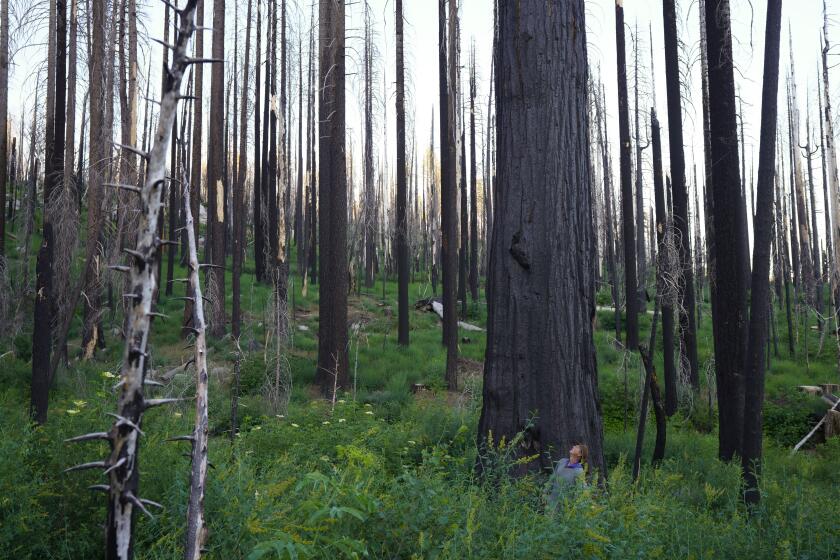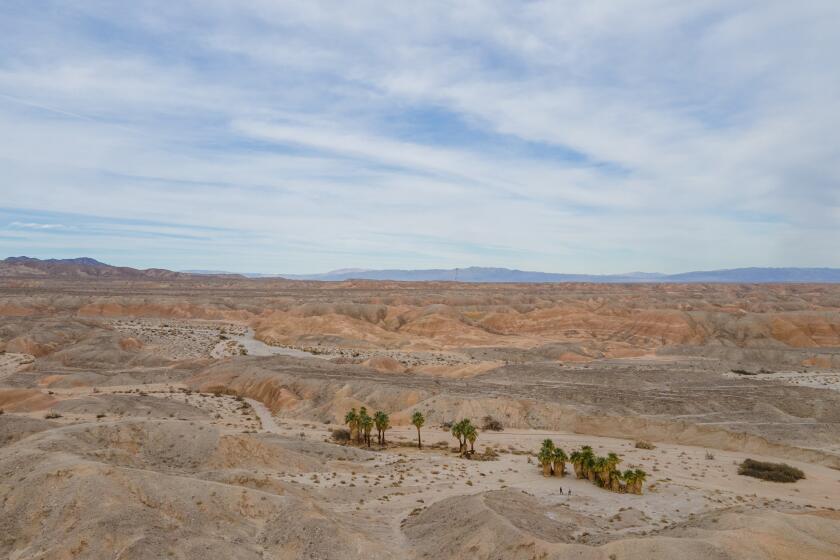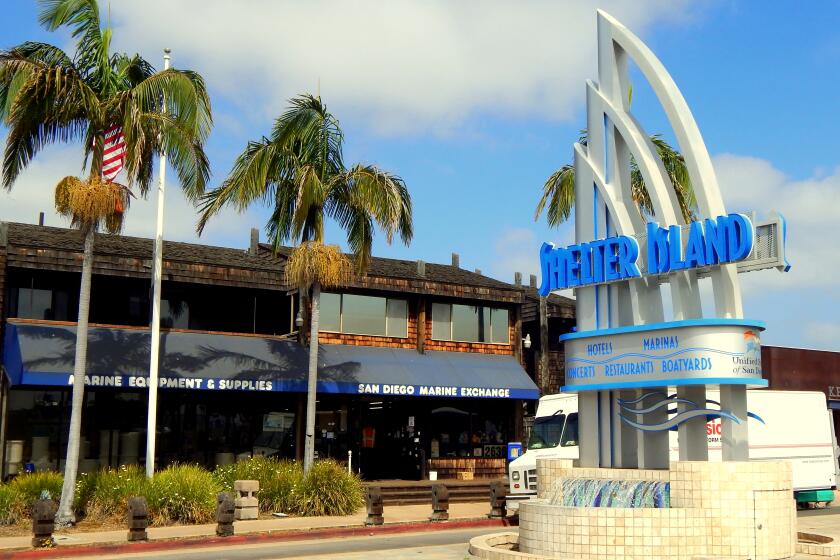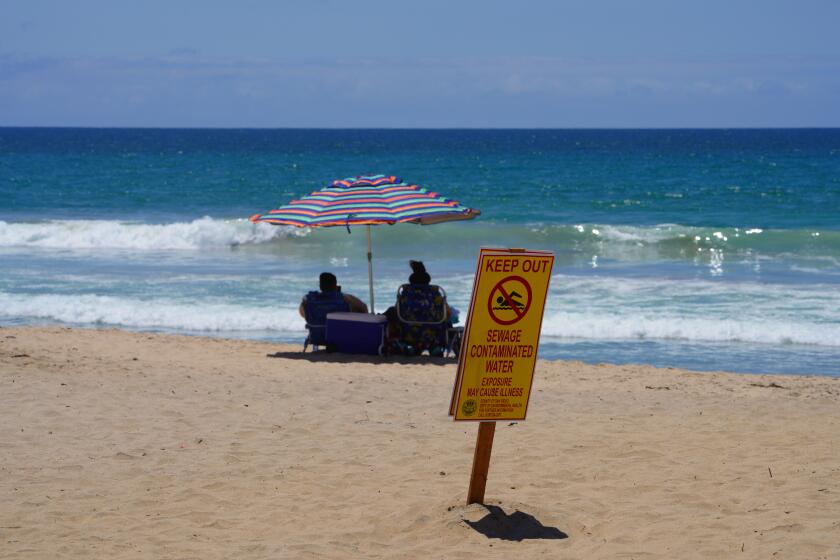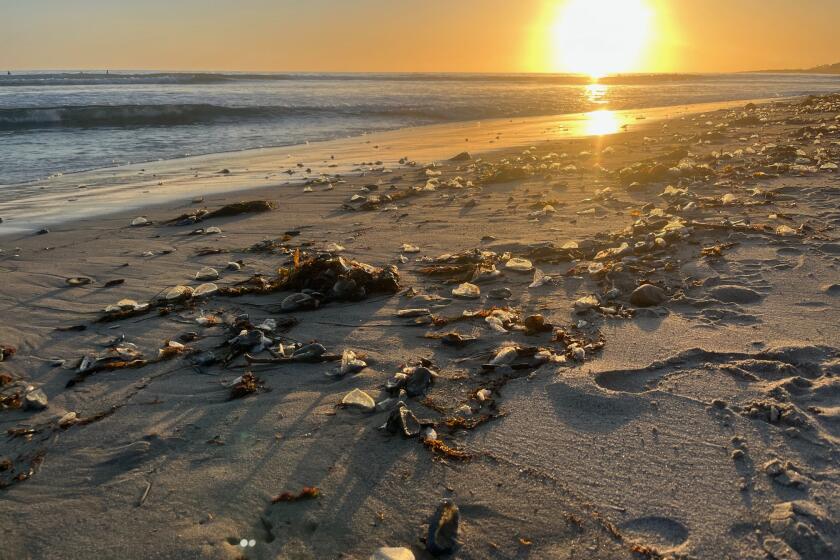Southern California forests are shrinking from wildfire and drought, study finds
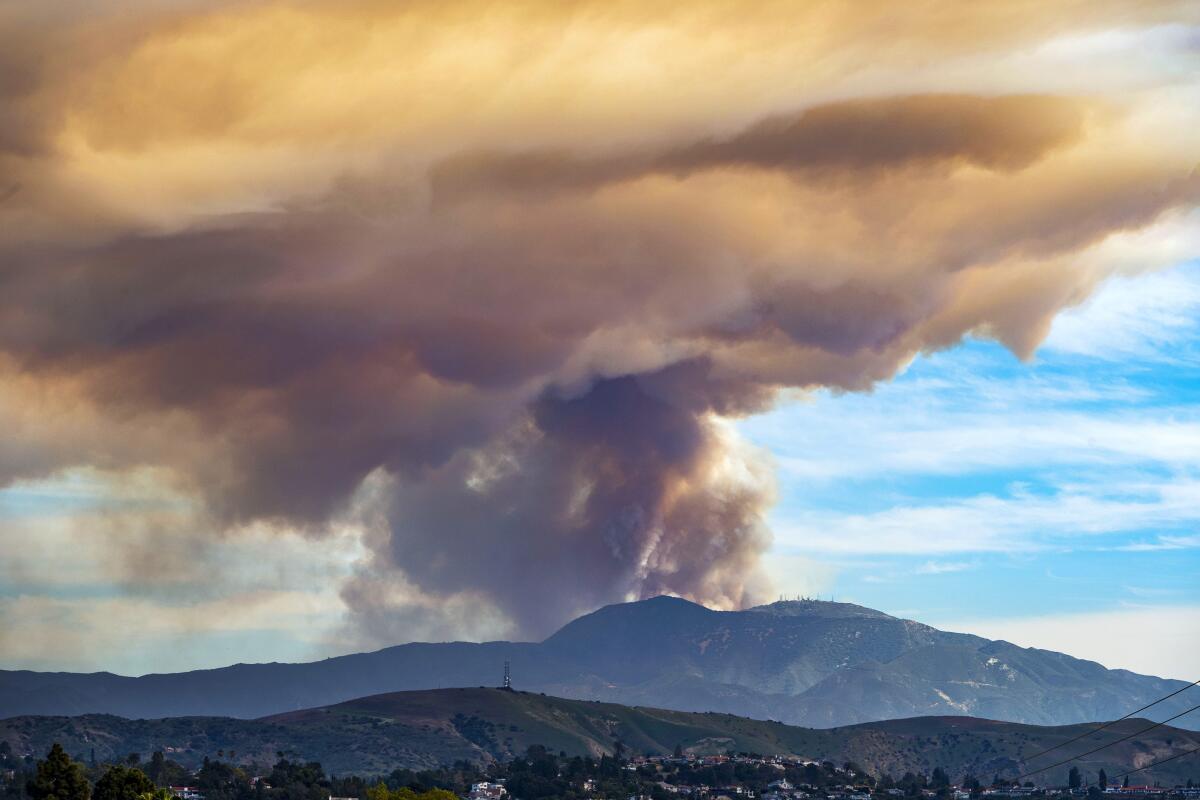
Tree cover across California has declined sharply over the last half century, but nowhere faster than in the state’s southern mountains
Forest canopies from the mountains of San Diego to San Bernardino and up to Santa Barbara have sharply declined over the last four decades as a result of climate change-fueled wildfire and drought.
That’s according to a new study from the University of California Irvine that documented a loss of tree cover across the entire state — led by Southern California, where forests have shrunk by 14 percent since 1985.
Whereas other parts of state, such as in the Sierra Nevada and along the central and northern coasts, have seen forests rebound to some extent following wildfires and other disturbances, researchers found that trees failed to regrow at the same clip farther south, where the climate is hotter and drier.
“At the end of the day, Southern California isn’t behaving the same way as the rest of California,” said Jon Wang, an Earth system scientist at UC Irvine and lead author on the paper, which was recently published in the journal Advancing Earth and Space Sciences.
“Any time we have another large drought, a bunch of forests are going to become vulnerable again,” he said, “and these fires are just going to ravage them.”
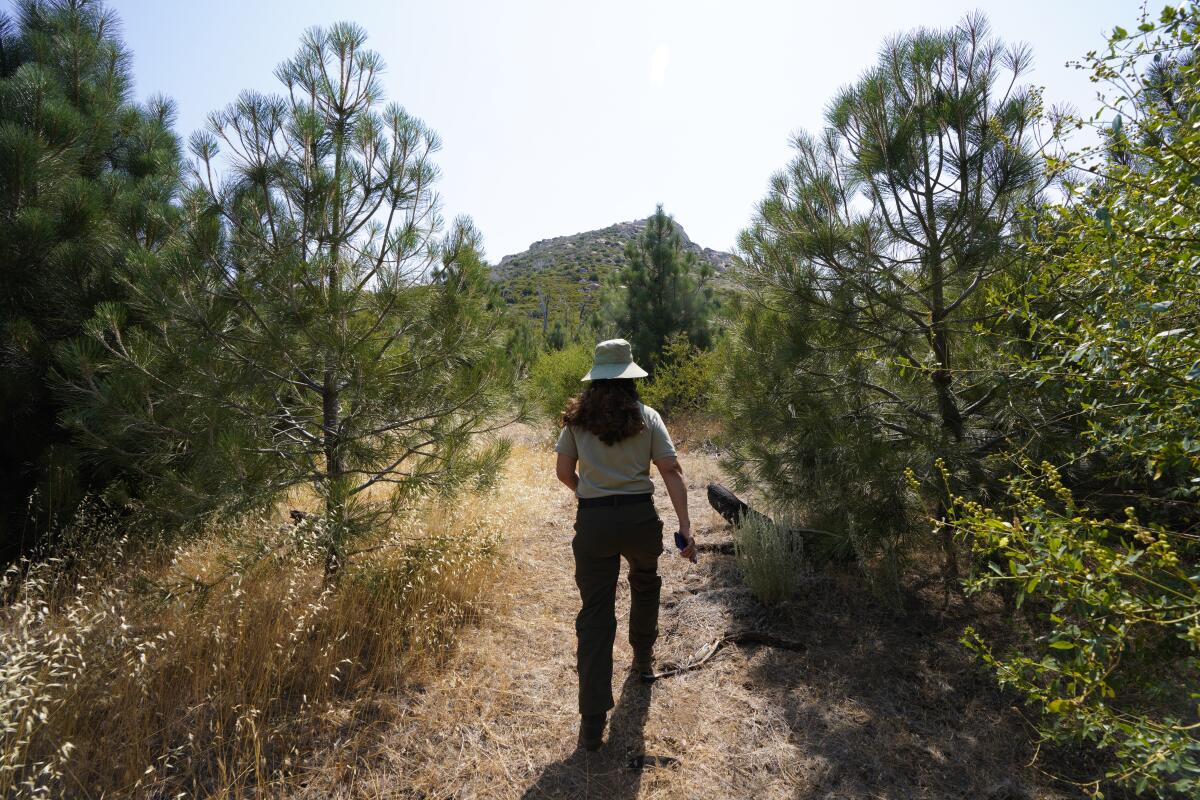
The first-of-its-kind analysis used satellite imagery to confirm years of anecdotal evidence from land managers and foresters, who have repeatedly raised the alarm about tree-covered landscapes transforming into shrub and grasslands.
The researchers used data from the U.S. Geological Survey and NASA to track shifts in tree and other vegetation cover, attributing the changes to disturbances, such as wildfire, drought and logging. The Central Valley and desert regions were excluded because they have so few trees.
“What they found through their measurements of the satellite imagery matches the narrative of what managers have been telling us,” said Sarah Hennessy, associate ecologist for the U.S. Forest Service in Southern California. “Forests really are in a critical and vulnerable place.”
While tree canopies statewide decreased by nearly 7 percent — or 1.1 million acres — since the mid-1980s, smaller vegetation and bare ground expanded by 9 percent — representing a nearly identical amount of acreage — according to the findings.
That’s primarily because of wildfire, which over the last two decades wiped out considerable gains in tree cover during the wet 1990s, researchers found. Human development was not analyzed as part of the study, as it played a negligible role in forest mortality over the study period.
Losses generally occurred where summer temperatures were over 63 degrees Fahrenheit, suggesting that ongoing planetary warming poses an existential threat to many of the state’s mountain forests.
Scientists say California’s imperiled forests need more wildfire, not less. Newsom’s $1.5 billion plan for wildfire prevention will fund logging to mimic the effects of naturally occurring blazes.
“We did find that the ability for trees to grow is really dependent on the climate,” Wang said. “Southern California’s warm climate might already be at the edge of where trees can be.”
The vulnerability of mountain forests in the southern part of the state is compounded by their relative lower elevation, according to experts. Trees in the Sierra Nevada, by contrast, have significantly more room to migrate upslope as temperature warm.
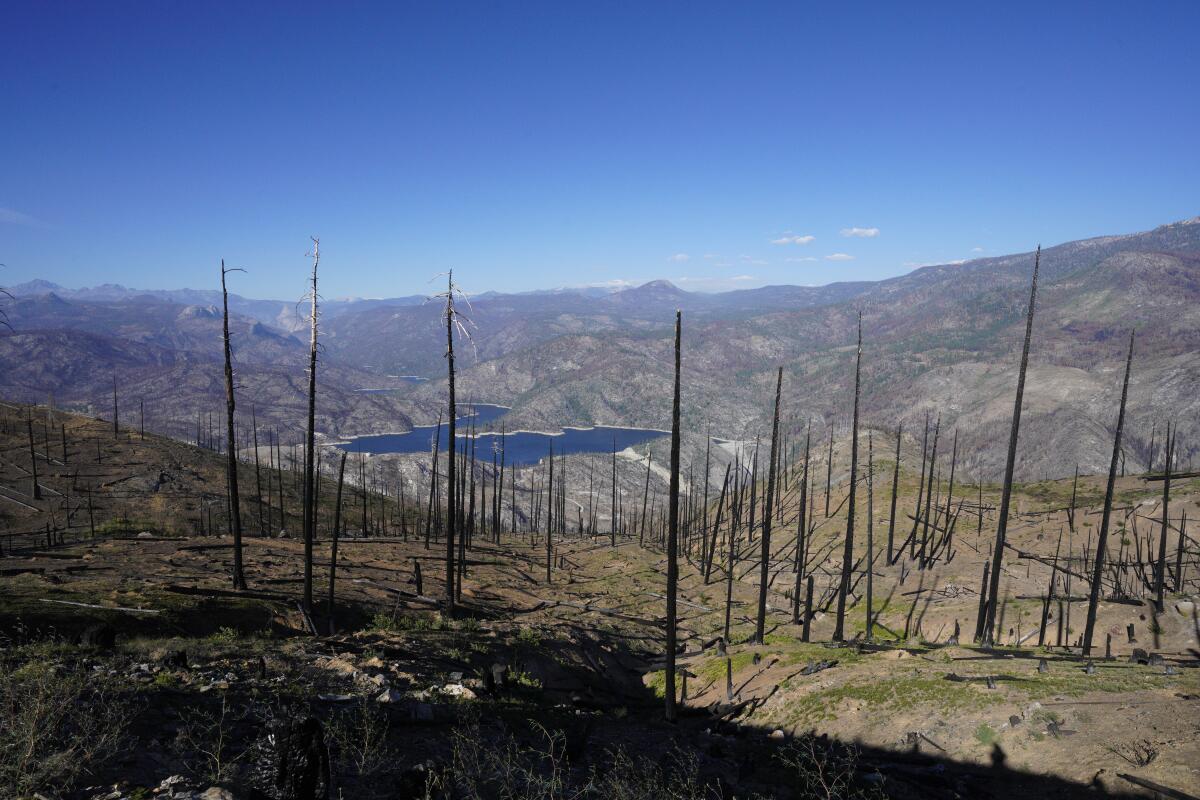
“In San Diego County, we don’t go much above 6,000 feet,” said Megan Jennings, research ecologist at San Diego State University. “In the Sierras, you get up over double that. That’s a lot more room to play with.”
The so-called sky islands of Southern California are also often bordered by deserts to the east and human developments to the west, Jennings added. “Our forests are disconnected. It’s these islands, so that also makes it difficult to recolonize.”
Foresters in San Diego County, for example, have struggled to get pine and other conifers to regrow in the Cuyamaca Rancho State Park after the 2003 Cedar fire killed roughly 90 percent of the trees. They’ve resorted to shading seedlings from the harsh sun, while endlessly chopping back fast-growing ceanothus shrubs. Gains have been slow and required millions of dollars in labor and other costs.
From wetlands to badlands, plants and wildlife in eastern San Diego County are struggling to survive. Ecologists face tough decisions about how to respond.
The findings from UC Irvine come as government land managers have increasingly wrangled with environmental activists over the best way to protect vulnerable landscapes.
Most academic researchers in the state have agreed that a century of logging and aggressive fire suppression have left forests overly dense and prone to massive crown fires that obliterate entire stands. While moderate to low-intensity fire is crucial for the resprouting of many cone-bearing trees, such as pines and giant sequoias, experts believe that repeated high-intensity fires that jump into a forest’s canopy can destroy the natural seed bank.
To prevent such mega blazes, hundreds of millions of dollars in funding for so-called thinning projects have in just the last two years been allocated to ramp up the removal of smaller trees. The work, which is done by logging crews, is largely focused on federal lands, such as the Seirra, Los Padres and San Bernardino national forests.
While state and federal officials would like to ramp up the use of chainsaws and other logging equipment to thin out densely packed forests, conservation groups have raised concerns about the impact of such treatments, often filing lawsuits to block projects.
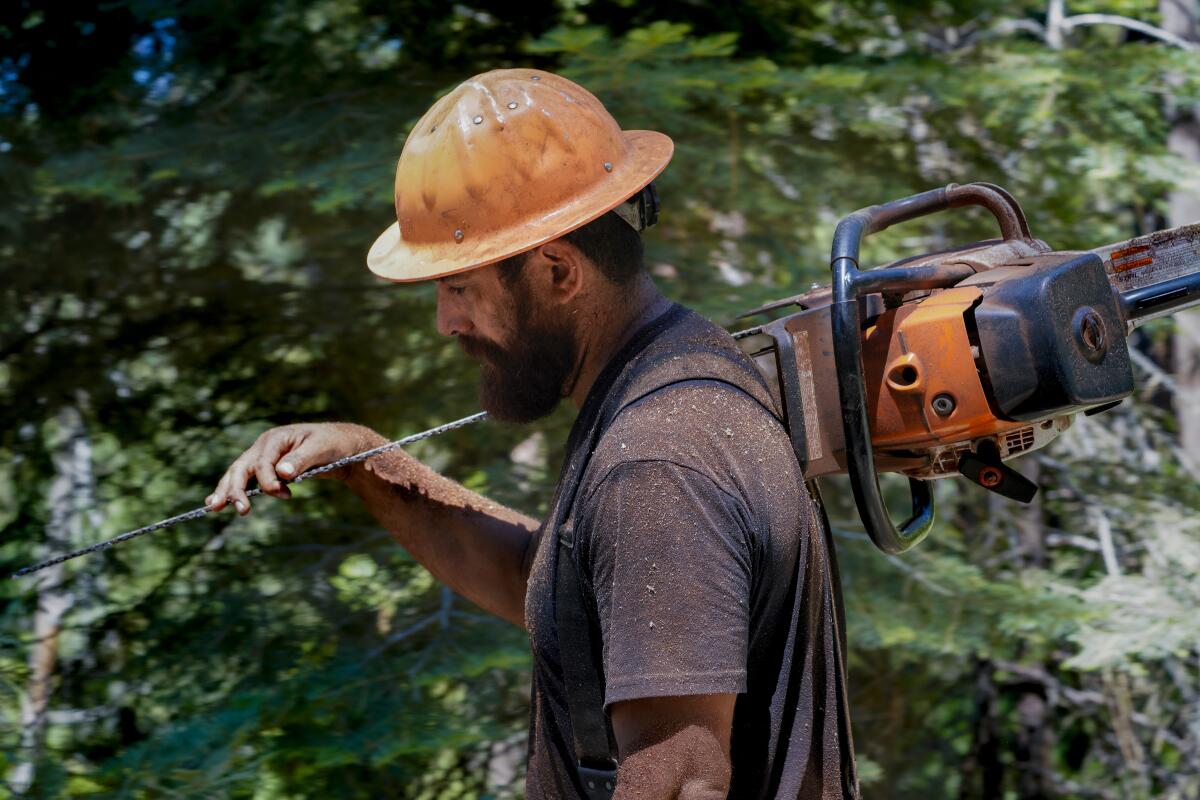
Forest thinning has proven ineffective against tamping down large fires driven by high winds and bone-dry conditions, said Bryant Baker, director of conservation and research for Los Padres ForestWatch.
“They’re doing more harm than good, especially these commercial thinning projects where they’re using heavy equipment,” he said. “They’re going out and spreading invasive plants, damaging water and soil and taking out a lot of trees that don’t need to be removed.
“You cause all these problems, and you don’t gain much from it when a wildfire does happen,” he added.
Hennessy with the U.S. Forest Service believes these new findings could provide the urgency her agency needs to get the public on board with projects that have proven controversial in the past.
“I’m so thankful for them publishing this when they did,” she said. “It provides us with some solid information that we can use to tell the story of what’s happening, not just within our land manager community but in trying to tell the public.”
After wildfire, beetle infestations and commercial harvesting were the leading causes of tree mortality over the studied time period. In areas where no disturbance was recorded, tree cover expanded across the state, but not in Southern California, where even in the absence of such challenges canopies shrunk by more than 4 percent.
Get Essential San Diego, weekday mornings
Get top headlines from the Union-Tribune in your inbox weekday mornings, including top news, local, sports, business, entertainment and opinion.
You may occasionally receive promotional content from the San Diego Union-Tribune.
